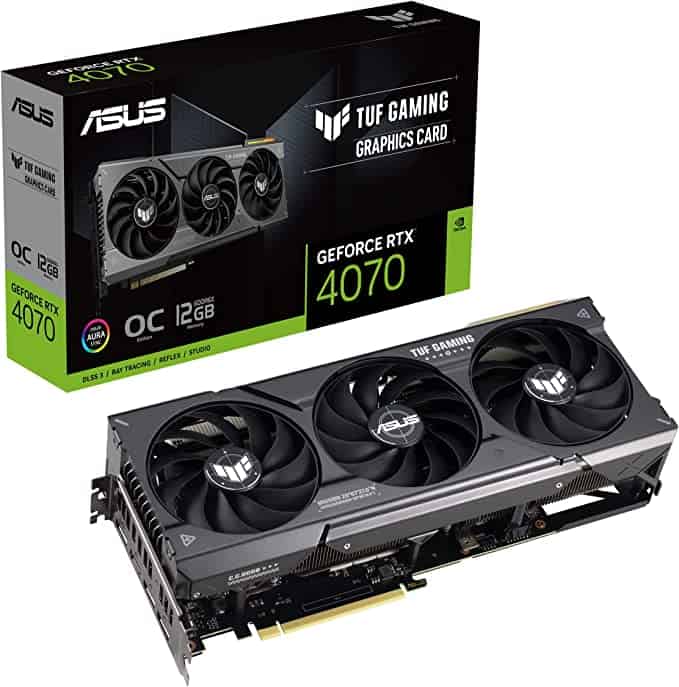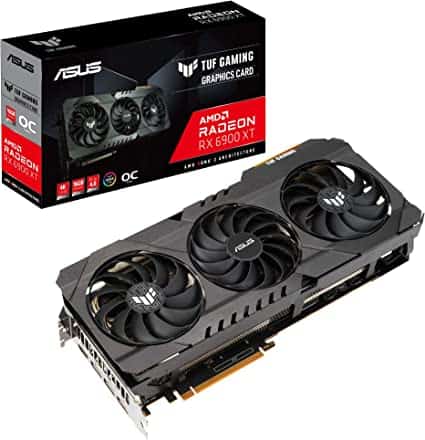RTX 4070 vs RX 6900 XT

Table of Contents
One of the most impressive aspects of the latest generation GPUs is the incredible power they pack, especially when compared to their predecessors. Nvidia’s latest card is a testament to this idea, as it is a mid-range powerhouse that confidently stands its ground against the best of the previous generation. But how does it compare in the RTX 4070 vs RX 6900 XT debate?
In this article, we’ll put the RTX 4070 head-to-head with the formidable RX 6900 XT, showcasing how Nvidia’s latest offering measures up and demonstrates the true potential of next-gen graphics. Get ready for an exciting comparison between these two GPU titans!
RTX 4070 vs RX 6900 XT: Specs
The RTX 4070 is based on Nvidia’s AD104 architecture, while the RX 6900 XT features AMD’s Navi 21 architecture. The RTX 4070 has 5,888 CUDA cores, whereas the RX 6900 XT has 5,120 Stream Processors. When it comes to VRAM, the RTX 4070 sports 12GB of GDDR6X memory, while the RX 6900 XT has 16GB of GDDR6 memory.
Despite having a smaller memory interface width of 192-bit compared to the RX 6900 XT’s 256-bit, the RTX 4070 manages to achieve a memory bandwidth of 504.2 GB/s, which is only slightly less than the RX 6900 XT’s 512.0 GB/s. This is due to the more efficient GDDR6X memory used in the RTX 4070.
| Specs | RTX 4070 | RX 6900 XT |
|---|---|---|
| Architecture | AD104 | Navi 21 |
| CUDA cores | 5888 | 5120 |
| VRAM | 12 GB GDDR6X | 16GB GDDR6 |
| Memory Interface Width | 192 bit | 256 bit |
| Memory bandwidth | 504.2 GB/s | 512.0 GB/s |
| Process Technology | TSMC 5nm process | TSMC 7nm process |
| Base clock speed | 1920 MHz | 1825 MHz |
| Boost Clock speed | 2475 MHz | 2250 MHz |
| Graphics Card Power (TDP) | 200W | 300 W |
| MSRP | $599 | $999 |
The process technology used in the RTX 4070 is TSMC’s 5nm process, which is more advanced than the 7nm process used in the RX 6900 XT. This allows the RTX 4070 to have a higher base clock speed of 1,920 MHz and a higher boost clock speed of 2,475 MHz, compared to the RX 6900 XT’s base clock speed of 1,825 MHz and boost clock speed of 2,250 MHz.
Moreover, the RTX 4070 has a significantly lower graphics card power (TDP) of 200W, making it more power-efficient than the RX 6900 XT with its TDP of 300W. This is an important factor to consider for those who prioritize energy efficiency and lower power consumption.
Lastly, the RTX 4070 has a more attractive price point with an MSRP of $599, while the RX 6900 XT is priced at $999. This difference in price, along with the performance advancements in the newer RTX 4070, makes it a compelling option for many users looking to upgrade their GPUs.
RTX 4070 vs RX 6900 XT: Performance
The arrival of the RTX 4070 couldn’t be better timed; users are on the hunt for a GPU that’s not only affordable but also packed with cutting-edge technology and delivers the performance necessary for gaming and productivity. This is precisely where the RTX 4070 shines brightest.
Equipped with the innovative Ada Lovelace architecture, the RTX 4070’s cores are both speedy and efficient. Boasting 5,888 CUDA cores, this GPU can tackle even the most demanding tasks with ease. Additionally, the 12GB of GDDR6X VRAM provides ample speed for rendering AAA games at impressive frame rates and resolutions.
In contrast, the RX 6900 XT, while still a powerful GPU from the previous generation, may struggle to keep up with the newer RTX 4070 in terms of efficiency and technological advancements. As a result, the RTX 4070 stands out as an excellent choice for those who want the perfect blend of performance, up-to-date technology, and affordability.
RTX 4070 vs RX 6900 XT: Price
The current market availability of the RX 6900 XT makes this comparison somewhat easier for Nvidia. However, when we shift our focus to pricing, things get a little more interesting. With an MSRP of $599, the RTX 4070 might seem a tad expensive for a mid-range GPU, but given the current state of GPU pricing, it’s actually quite reasonable.
On the other hand, the RX 6900 XT was the flagship GPU of its time, launching with an MSRP of $999. As of the writing of this article, you can find the RX 6900 XT for as low as $649, which might tempt some buyers. However, in our opinion, the RTX 4070 still takes the crown here, thanks to its superior price-to-performance ratio. Features like ray tracing and DLSS give the edge to Team Green’s GPU in this matchup.
RTX 4070 vs RX 6900 XT: Conclusion
In conclusion, while the RX 6900 XT was initially designed as a high-end GPU, the architectural advancements brought forth by Nvidia have positioned the RTX 4070 as the superior choice for gamers, content creators, and those seeking the best price-to-performance ratio for their build. The combination of cutting-edge technology, efficient performance, and reasonable pricing make the RTX 4070 a clear winner in this comparison. So, if you’re looking to upgrade or build a new system, the RTX 4070 should be at the top of your list for a well-rounded and future-proof GPU experience.
What is AMD equivalent to RTX 4070?
Given that the RX 7900 XT can be loosely ascribed as an RTX 4070 Ti equivalent, then it’s a safe bet to highlight the RX 6900 XT as a 3080 equivalent. It’s not so much a one-to-one similar card, as they offer different specs and metrics for different kinds of workloads, but can be similarly equated given their adept 4K resolution metrics. There really isn’t, as of yet, a highly comparable AMD offshoot of Nvidia’s RTX 4070 just yet.


